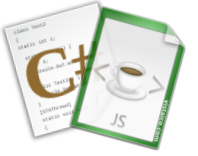Check Paypal account balance and transactions via C# API
 After we had a look at how to sent push notifications via C# recently, there are plans for the next C# article today. This time it’s about how to read account balance, sales and transactions and other things of a Paypal account.
After we had a look at how to sent push notifications via C# recently, there are plans for the next C# article today. This time it’s about how to read account balance, sales and transactions and other things of a Paypal account.
First some basic information. Although Paypal is an “online account”, in many ways it differs from an online (giro) account of a “classic” bank. For example, Paypal does not support the Homebanking Computer Interface (HBCI) to retrieve account information or send payments. Instead, Paypal offers different APIs (REST, SOAP, + SDKs, …), which differ not only in structure and technology, but especially in the range of functions. For our purposes we will use the so-called “NVP / SOAP API” and connect to it […]

 This article is going to be all about how you can control, customize and extend other programs using C#. As an example scenario we’re going to be extending the default Windows program Notepad with a custom function.
This article is going to be all about how you can control, customize and extend other programs using C#. As an example scenario we’re going to be extending the default Windows program Notepad with a custom function. No matter how frumpy SAP may look most of the time, nevertheless you can build such modern things like web services inside the SAP system. Even the WSDL (Web Service Description File) file can be generated in SAP. I read about this feature (WSDL generation) just at the right time, because recent days I should write a web service in SAP which should be triggered by a C# application.
No matter how frumpy SAP may look most of the time, nevertheless you can build such modern things like web services inside the SAP system. Even the WSDL (Web Service Description File) file can be generated in SAP. I read about this feature (WSDL generation) just at the right time, because recent days I should write a web service in SAP which should be triggered by a C# application. The .NET framework provides a large number of ways to encode HTML code and URLs. There exist, for example, Uri.EscapeDataString(), Uri.EscapeUriString(), System.Web.HttpUtility.UrlEncode(), System.Web.HttpUtility.UrlPathEncode(), System.Web.HttpUtility.HtmlEncode() or System.Web.HttpUtility.HtmlAttributeEncode().
The .NET framework provides a large number of ways to encode HTML code and URLs. There exist, for example, Uri.EscapeDataString(), Uri.EscapeUriString(), System.Web.HttpUtility.UrlEncode(), System.Web.HttpUtility.UrlPathEncode(), System.Web.HttpUtility.HtmlEncode() or System.Web.HttpUtility.HtmlAttributeEncode().